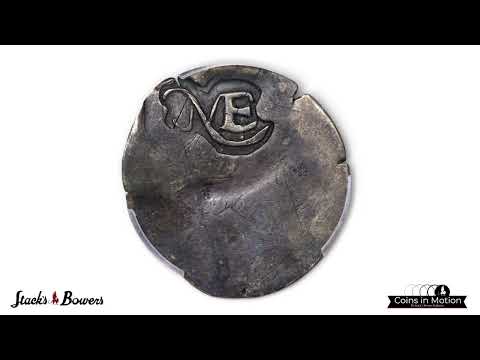A small silver coin that was struck in 17th century Boston just sold for $2.5 million dollars. The 1652 Massachusetts threepence is about the size of a nickel, weighs only 1.1 grams, and the silver itself has a value of $1.03 based on today’s market. This eye-popping auction price beats the previous world record price of $646,250 for an American coin that was struck before the American Revolution. It has also set a record sale price for any non-gold United States coin that struck before the founding of the United States Mint in 1792.
The threepence was struck only a few weeks before the first mint would be opened in the future US. The Boston Mint was officially created on May 27, 1652 to help ensure that businesses in the already commercially successful Massachusetts Bay Colony had an adequate supply of money. At the time, England was not inclined to send gold and silver coins to the colonies, as they were in short supply there. According to the Smithsonian National Museum of American History, Boston authorities allowed two settlers, John Hull and Robert Sanderson, to create the mint in 1652. The pair were soon striking silver coins, defying the crown’s authority.
This New England threepence coin is also the only example outside of a museum. The Massachusetts Historical Society has had one of these coins in its collection for 120 years and no individual collector has had the chance to own one of these.
All types of coins that were made at the Boston Mint are scarce. Silver threepences, sixpences, and shillings were all struck in four different designs between 1652 and 1682. The most famous and numerous of these coins are the Pine Tree shillings that were struck over the last 10 years of the Boston Mint’s operation. These NE 1652 coins are extremely rare and all have a small NE for New England and their value in pence (rendered as III, VI, or XII). Of the NE coins of 1652, the threepence piece is the most rare.

This particular threepence piece was found in an old cabinet in Amsterdam around 2016. It is believed to have come from the Quincy Family of Boston. This New England political dynasty included Abigail Adams, whose husband John was ambassador to the Netherlands in the 1770s and 1780s and eventually the second president of the United States. Abigail’s great-grandfather was the stepbrother of John Hull who minted these coins. Extensive testing by the Professional Coin Grading Service (PCGS) revealed that it is a true NE threepence.
[Related: Benjamin Franklin used science to protect his money from counterfeiters.]
Stack’s Bowers Galleries Director of Numismatic Americana John Kraljevich, said that he was “very pleasantly shocked” at the price, which was more than three times in-house presale estimates. The buyer was not named.
Two other examples of the 1652 New England shilling were also sold in this auction for $60,000 and $192,000. Other collectibles that the auction house has sold for more than $1 million include the 1936 Nobel Peace Prize medal and rare pieces of paper money.

